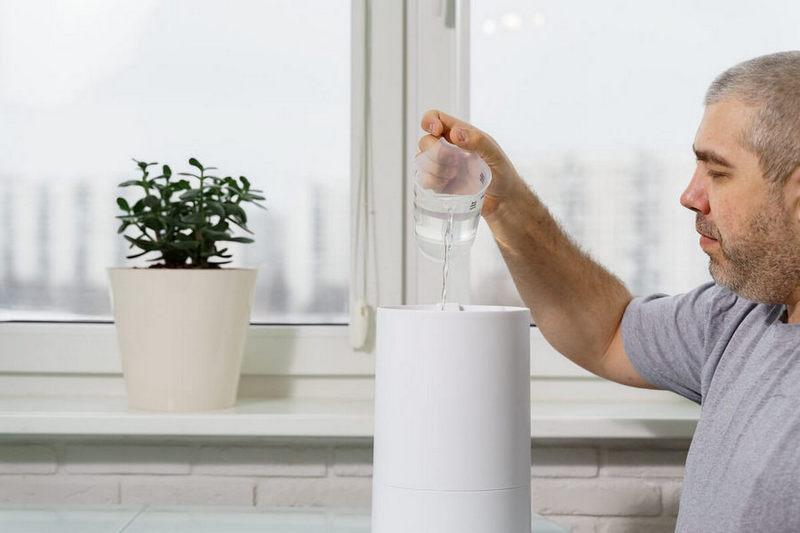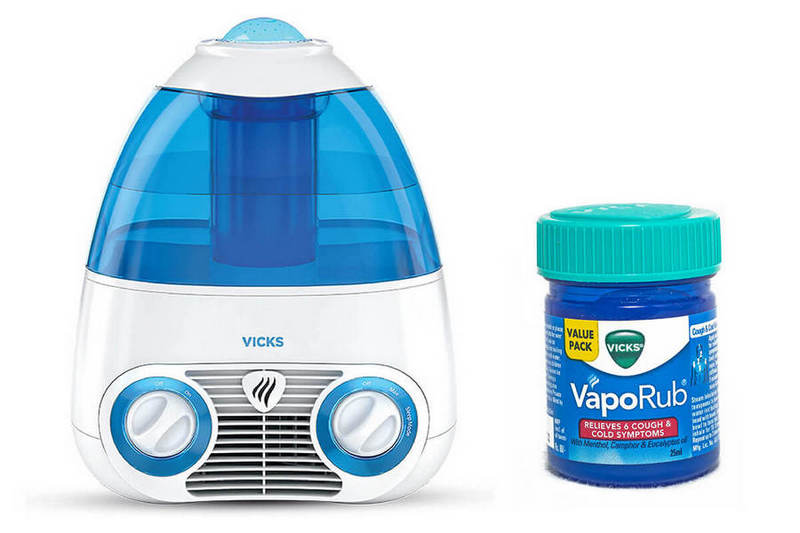Humidifiers are an excellent way to improve the environment of your home and stay healthy during seasonal changes. They are especially useful during the winter season when the air is dry and you can benefit from having more moist air in your living space.
These handy devices help ease and prevent many health conditions like dry sinuses, colds, bloody noses, dryness, and cracked lips. This makes them an important investment for your home and health.
But poor maintenance and the misuse of humidifiers can make you sick. Here, we will dive into humidifier sickness symptoms and share nine tips on maintaining your humidifier properly to prevent its adverse effects.
What Are Humidifier Sickness Symptoms?
Humidifier sickness aka humidifier fever is a real health concern and can have a severe impact on your health and well-being. Humidifier sickness symptoms resemble flu-like symptoms such as:
- Fever
- Chills
- Congestion
- Runny nose
- Sore throat
- Headache
- Fatigue
These symptoms may not all appear at once. Some may not even appear at all. It varies from individual to individual and depends on many factors like the water you use and the types and amounts of minerals found in it.
Note that besides flu-like symptoms, a dirty humidifier can also cause and exacerbate serious lung infections, asthma, and allergies.
When Can Humidifiers Make You Sick?
Despite their important functions and advantages, humidifiers can make you sick. This happens in the following situations:
Poorly Maintained Units
A humidifier typically has water tanks that convert water into mist. Over time, water leaves behind residues in different parts of the humidifier that are exposed to it.
A humidifier that is poorly maintained and not regularly cleaned is a breeding ground for dirt, bacteria, and mold. Microorganisms can contaminate a humidifier, including its reservoir and filter, and turn its benefits sour in no time.
A dirty humidifier releases contaminated steam or mist that releases allergens into the air. This can exacerbate asthma, sinusitis, and allergies among people who are already suffering from these health issues.
Even people who are healthy can experience flu-like symptoms and nasty lung infections because of a poorly maintained humidifier.
Over-Humidification of the Air
When you use a humidifier for longer than necessary, it leads to excessively high humidity levels in your living space. Over-humidifying the air creates a poor environment in your home which allows disease-causing bacteria, mold, mildew, dust mites, and other microorganisms to thrive.
These microorganisms and allergens then make their way into your body and trigger or worsen illnesses, thereby reversing the positive effects of the humidifier.
9 Tips for Properly Maintaining Your Humidifier
If you want to maintain your humidifier properly and keep it free of harmful microorganisms, you’re in the right place. These nine simple tips will help you care for your portable humidifier properly and keep diseases at bay:
1. Use Demineralized or Distilled Water
If you usually use tap water in your humidifier tank, stop using it. Tap water has minerals that accumulate in your humidifier over time and create deposits. This promotes bacterial growth in your humidifier.
When the humidifier releases these minerals into the air, they normally show up in the form of white dust. You may also inhale some of these minerals and suffer from flu-like symptoms or lung infections.
Demineralized or distilled water has a lower concentration of minerals than tap water which makes it better for your humidifier and health. Also, if your humidifier’s manufacturer recommends demineralization filters or cartridges for your unit, make sure you use them.
2. Change the Water in Your Humidifier Frequently
Replace the humidifier water often to prevent mineral deposits and other residues from developing inside the unit. If you see any film or residue in your humidifier, unplug it, empty its tank, dry its inner surfaces, and refill it with clean water.
If possible, do this every day, more so if you use ultrasonic or cool-mist humidifiers.
3. Maintain the Right Humidity Level
Keep the humidity levels in your home between 30 percent and 50 percent. Below 30 percent creates dry air and more than 50 percent can breed mold, bacteria, and dust mites. If your humidifier does not have a gauge, purchase a hygrometer to keep tabs on the humidity level in your home.
4. Keep the Space Around Your Humidifier Dry
Make sure the area around your humidifier — including your carpets, tablecloths, drapes, and windows — is always dry. If this space becomes damp or wet often, turn down the humidifier or cut down on the amount of time you use it.
5. Follow the Manufacturer’s Instructions for a Central Humidifier
If you’ve built your humidifier unit into your home’s central heating and cooling system, read the instruction manual carefully to prevent its misuse. You can also ask your heating and cooling specialist about how to properly maintain and care for your central humidifier.
6. Clean Your Humidifier Regularly
It is important to clean your humidifier regularly, preferably every three days. Before cleaning the humidifier, make sure you unplug it first. Using a 3% hydrogen peroxide solution that you can buy from a local pharmacy, remove any mineral deposits or film from the humidifier’s reservoir and other components.
Certain humidifier manufacturers recommend using chlorine bleach or other disinfectants for cleaning humidifiers.
Once you finish cleaning the tank, rinse it properly to prevent dangerous chemicals and microorganisms from becoming airborne and entering your body.
7. Replace Humidifier Filters Often
If your humidifier unit comes with a filter, replace it as frequently as the manufacturer recommends or whenever it starts looking dirty. Also, replace your central air conditioning and heating system’s filter regularly to ensure that the air in your home is free of pathogens.
8. Prepare Your Humidifier for Storage
If you need to store your humidifier for a while, drain and clean it properly before putting it in storage. When you remove it from storage and decide to use it again, clean it once more to get rid of any microbial growth or dirt. Also, throw away used filters, cartridges, and cassettes.
9. Replace Old Humidifiers
Over the years, your humidifier will accumulate mineral deposits that are hard or even impossible to get rid of. This encourages bacterial growth in the unit. In this case, consider replacing your humidifier with a new one.
Summary
Microbial growth and over-humidifying the air can cause humidifier sickness and negatively affect your health. Take steps early on to keep your humidifier clean and functioning well so you can prevent diseases and stay healthy.
- What Are Humidifier Sickness Symptoms?
- When Can Humidifiers Make You Sick?
- 9 Tips for Properly Maintaining Your Humidifier
- 1. Use Demineralized or Distilled Water
- 2. Change the Water in Your Humidifier Frequently
- 3. Maintain the Right Humidity Level
- 4. Keep the Space Around Your Humidifier Dry
- 5. Follow the Manufacturer’s Instructions for a Central Humidifier
- 6. Clean Your Humidifier Regularly
- 7. Replace Humidifier Filters Often
- 8. Prepare Your Humidifier for Storage
- 9. Replace Old Humidifiers
- Summary







